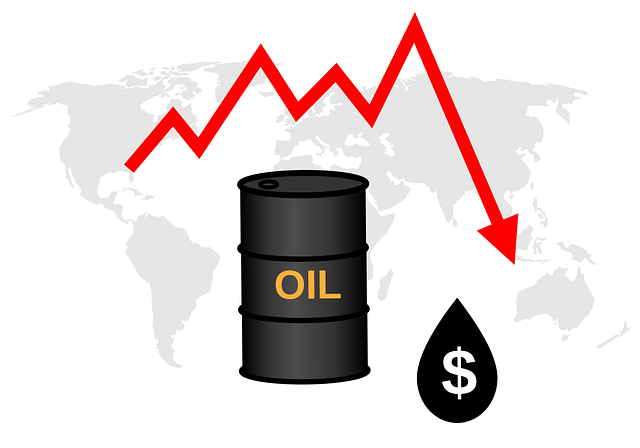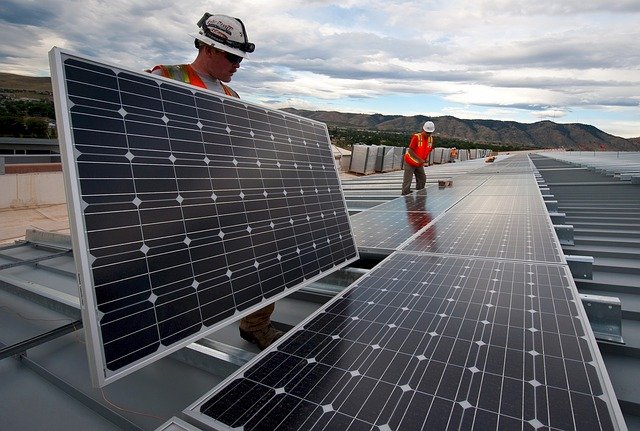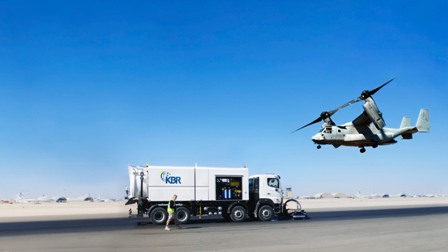
Energy top stories to 15/7/22. OPEC daily basket price stood at $102.66/bl, 14 July 2022
Total global oil demand is expected to average 99.2 million bpd in 2022, up by 1.7 million bpd compared to 2021, the IEA said in its July forecast.
ADS-TEC Energy plc, a global leader in battery-buffered ultra-fast chargers, today announces the expansion of its management team:
Wolfgang Breme has been appointed Chief Financial Officer (CFO) of the ADS-TEC Energy Group effective as of July 1, 2022. Mr. Breme has extensive international experience in the financial management of technology-oriented mechanical and plant engineering companies, including more than 20 years as Financial Board Member and Chief Financial Officer. As a member of the Executive Board, he was responsible for Finance and Administration at AIXTRON SE (FSE: AIXA) for almost a decade. He also held CFO positions at technotrans SE, AVENTICS (formerly Bosch Rexroth Pneumatics) and the Skeleton Technologies Group. Mr. Breme has many years of management and capital market experience in an international environment and M&A expertise and is familiar with the challenges of the volatile project business in high-tech mechanical and plant engineering.
Commenting on his entry into the ADS-TEC Energy Group, Mr. Breme states: “ADS-TEC Energy is a company with an enormous growth potential. I am convinced that the intelligent battery-buffered ecosystems of ADS-TEC Energy are an enabler for a decentralized architecture of our energy systems. In doing so, we are making a decisive contribution to the ecological transformation of mobility, industry, commerce, infrastructure and housing.” “By appointing Wolfgang Breme, we are underlining our global claim to leadership in battery buffered ultra-fast charging systems and thus strengthening our market position”, says Thomas Speidel, founder and CEO, ADS-TEC Energy.
The CFO of ads-tec Energy GmbH, Mr. Robert Vogt, remains the Chief Accounting Officer of the ADS-TEC Energy Group. Read More
The latest IEA’s Monthly Gas Statistics report including April 2022 data shows that for Total OECD:
Production of natural gas increased by 3.7% compared to April 2021.
Imports (entries)1 of natural gas were 0.4% lower on a year-on-year basis, and total OECD exports (exits)1 increased by 0.7% in the same period.
Gross consumption of natural gas decreased by 3.4% in April 2022 on a year-on-year basis. Read More–>
The latest IEA’s Monthly Oil Statistics report including April 2022 data shows that for Total OECD:
Total OECD production of crude oil, NGL and refinery feedstocks increased by 4.7% in April 2022 compared to April 2021.
Refinery gross output of total products grew by 7.4% on a year-on-year basis.
Net deliveries of total products grew in April 2022 compared to April 2021 (+2.9% y-o-y).
Oil stock levels on national territory increased by 2 587 kt in April 2022 compared to the closing stock levels in March 2022 and closed at 488 million metric tons. Read More
The latest IEA’s Monthly Electricity Statistics report including April 2022 data shows that for Total OECD:
In the OECD, total net electricity production was 821.7 TWh in April 2022, up by 1.3% on a year-on-year basis1.
Renewable electricity production reached 309.2 TWh, up by 9.8% y-o-y. The increase was largely driven by higher wind and solar power production, +24.7% and +15.0% y-o-y respectively. Hydropower production which continued to represent the highest share (+14.8%) of electricity mix among renewable sources, increased slightly at 121.2 TWh (+1.2% y-o-y).
Fossil fuels provided 49.5% of the electricity production (406.3 TWh) in the OECD countries. Reliance on Natural gas (217.9 TWh) and Coal (145.2 TWh) was still high, corresponding to a 26.5% and 17.7% share in the electricity mix respectively, However, electricity production from natural gas decreased by 4.2% in April 2022 compared to the same month last year. Similarly, Nuclear power output amounted to 129.2 TWh in April 2022, down by 7.0% y-o-y.
Highlight of the month:
In the United States, electricity production from wind jumped to 46.1 TWh in April 2022 (+28.7% y-o-y), with wind power reaching a record high share of 14.8% in the electricity mix. Similarly, solar power also gained significant momentum and increased by 23.6% at 17.8 TWh, corresponding to a 5.7% share in the electricity mix, an all-time high for the country. This reflects the general trend observed over the last years in the United States, where generation from renewables has been steadily increasing as a result of new capacity additions. Read More
Airbus Protect, a new Airbus subsidiary bringing together the Company’s expertise in cybersecurity, safety and sustainability-related services, is officially established. The aim of this new entity is to provide a unique global service offering to protect Airbus company-wide and meet the needs of external authorities and commercial customers, including in the field of critical infrastructures. The new organisation brings together more than 1,200 experts based in France, Germany, the UK, Spain and Belgium who will grow Airbus’ capabilities and leverage synergies to further develop its expertise in these key areas. Read More
China has finished the construction of its first unmanned offshore oil platform on Wednesday at Enping Oilfield in the South China Sea.
The platform, named EP10-2, does not have any offices or living quarters. As a result, it’s much cheaper to build and maintain, enabling oil companies to drill fields that are not cost-effective enough for traditional rigs. Annual maintenance cost for this platform could be 10 million yuan (about $1.49 million) cheaper than its manned equivalent.
The size of the platform is significantly smaller than traditional rigs. The deck is reduced to half and total weight is only two-thirds of the traditional platforms.
What’s more, the platform can work under extreme conditions like typhoon since it is mostly remote-controlled. Read More

On June 29, CNOOC launched its carbon peak and carbon neutrality action plan, aiming to achieve carbon peaking in 2028 and carbon neutrality in 2050.
During the “14th Five-year plan” period, CNOOC plans to decrease its carbon emission intensity by 10 percent to 18 percent. The company will invest 5 percent to 10 percent of its capital expenditure in emerging industries including new energies, and the percentage of renewable energies in its total energy output would surpass that of oil and gas by 2050. Through the implementation of the action plan, CNOOC is set to transform into a world-calss green and low-carbon energy product and service provider in an all-round way. More
Arrival, inventor of a unique new method of design and production of equitable electric vehicles (EVs) by local Microfactories, announced Mandeep Bajwa has joined the company’s leadership team as Chief Human Resources Officer (CHRO).
Mandeep will join Arrival in July, where she will be responsible for Arrival’s strategy in managing all employees globally, overseeing all of Arrival’s employee and workplace operation including global recruitment, people management and operations, diversity, equality and inclusion, and organisational effectiveness. Read More
Arrival, the U.K.-based commercial EV company, plans to slash costs and cut as much as 30% of its workforce as it attempts to protect the business from a challenging economic environment while meeting its production targets.
The company, which went public last year via a merger with a special purpose acquisition company, said the restructuring plan includes a targeted 30% reduction in spending across the entire business. It anticipates the reorganization could “potentially impact up to 30% of employees globally.” The plan would allow the company to meet its targets through late 2023 using the $500 million of cash it has on hard.
The cuts are designed to keep Arrival on track to start production of its commercial EV van in the third quarter of this year, the company said. Arrival added that it must address challenges such as supply chain issues, an ongoing pandemic, geopolitical tensions and rising inflation now as it starts production this year. Read More
An International Monetary Fund (IMF) staff team led by Carlo Sdralevich visited Accra during July 6-13, 2022, to assess the current economic situation and discuss the broad lines of the government’s Enhanced Domestic Program that could be supported by an IMF lending arrangement. The IMF team met with H.E. Vice President Bawumia, Finance Minister Ofori-Atta, and Governor Addison of the Bank of Ghana. The team also met with the Parliament’s Finance Committee, civil society organizations, and development partners, including UNICEF and the World Bank to engage on social spending.
At the conclusion of the mission, Mr. Sdralevich issued the following statement:
“Ghana is facing a challenging economic and social situation amid an increasingly difficult global environment. The fiscal and debt situation has severely worsened following the COVID-19 pandemic. At the same time, investors’ concerns have triggered credit rating downgrades, capital outflows, loss of external market access, and rising domestic borrowing costs. Read More
| Oil and Gas Blends | Units | Oil Price $ | change |
| Crude Oil (WTI) | USD/bbl | $95.66 | — |
| Crude Oil (Brent) | USD/bbl | $99.30 | Up |
| Bonny Light | USD/bbl | $118.10 | Up |
| Saharan Blend | USD/bbl | $117.77 | — |
| Natural Gas | USD/MMBtu | $6.71 | Down |
| OPEC basket 14/07/22 | USD/bbl | $102.66 | Down |
Big Oil majors in the United States have found themselves the target of much pressure to boost production lately, as prices go wild amid a tight—and tightening—market. At the same time, the U.S. government, as well as the EU, have been looking all over the world for more supply. Wood Mackenzie just had some bad news for them. According to new research from the energy consultancy, more than half—65 percent, to be precise—of the world’s discovered oil and gas reserves are under the control of national oil companies.
The reason this is bad news is that, in addition to NOCs like Saudi Aramco, QatarEnergy, and Abu Dhabi’s Adnoc, these companies also include Russia’s Rosneft and Gazprom, the National Iranian Oil Company, and Venezuela’s PDVSA.
These seven companies, according to Wood Mac analysts, can keep producing oil and gas at their current rates for the next 40 to 60 years or even longer if they tap their spare capacity.
It was national oil companies that have made 41 percent of all new oil and gas discoveries in conventional resources since 2011, the analysts noted. What’s more, the NOCs’ share in new discoveries has been on the increase since 2018 as the energy transition push prompts the evolution of their exploration strategies, the report said.
In total, national oil companies have discovered more than 100 billion barrels of oil equivalent since 2011, the report said, which was twice what oil majors discovered. But not all is rosy for the NOCs. Unlike the majors, NOCs were significantly worse at commercializing these new discoveries, the Wood Mac analysts noted.
Two-thirds of what Big Oil has discovered since 2011 is considered viable and advantaged. On the other hand, two-thirds of what the NOCs have discovered is considered contingent. Read More
Equinor’s second quarter 2022 safety results. The second quarter 2022 safety results show that the serious incident frequency remains at the same level as in the first quarter, while the frequency for personal injuries went up. There were no incidents with major accident potential in the second quarter.
At the end of the second quarter the serious incident frequency (SIF) was 0.5. Most of the incidents are related to dropped objects.
The total recordable injury frequency (TRIF) during the past 12 months was 2.5, up from 2.4 in the first quarter. The number of serious injuries is also included in the serious incident frequency.
“We have not succeeded in bending the curve when it comes to injuries. It is not enough to learn from each individual incident, we must also intensify the work we do every day to strengthen a proactive safety culture,” says Jannicke Nilsson, executive vice president Safety, Security and Sustainability.
Ten oil and gas leaks have been recorded during the past 12 months. Read More

Biden-Harris Administration, through the U.S. Department of Energy (DOE) today announced a slate of new initiatives and $56 million in new funding, including $10 million from President Biden’s Bipartisan Infrastructure Law, to spur innovation in solar manufacturing and recycling. Together, the funding will help make clean energy more affordable and reliable, create good-paying jobs, and enhance U.S. economic growth and competitiveness. Developing more solar power, the cheapest form of new electricity supply, is key to achieving President Biden’s goal of 100% clean electricity by 2035.
“This administration wants to seize U.S. leadership in solar energy, from manufacturing to recycling, and that means making the right investments to ensure these technologies are made right here at home,” said U.S. Secretary of Energy Jennifer M. Granholm. “Thanks to President Biden’s Bipartisan Infrastructure Law, DOE is able to invest in our nation’s innovators so they can improve manufacturing and strengthen the domestic solar supply chain—lowering energy bills for Americans and businesses and driving toward an equitable clean energy future.”
According to DOE’s Solar Supply Chain Review Report, developing more domestic solar manufacturing can lead to benefits to the climate and environment as well as for American workers, employers, national security, while lowering energy bills for American families. The new programs announced today are designed to drive innovation in solar technology and manufacturing, supporting opportunities for the U.S. to expand production of thin-film modules, which do not rely on foreign-dominated supply chains, as well as supporting newer technologies like perovskite solar cells.
DOE’s New Solar Innovation Funding Opportunities Read More
The U.S. Department of Energy (DOE) Solar Energy Technologies Office (SETO) announced the Fiscal Year 2022 Photovoltaics Research and Development (PVRD) funding opportunity, which will award $29 million in funding for projects that reduce costs and supply chain vulnerabilities, further develop durable and recyclable solar technologies, and advance perovskite photovoltaic (PV) technologies toward commercialization. Of the $29 million, $10 million will be funded by President Biden’s Bipartisan Infrastructure Law to increase the reuse and recycling of solar energy technologies.
Minority serving institutions, minority business enterprises, minority owned businesses, woman owned businesses, veteran owned businesses, tribal colleges and universities, community colleges or entities located in an underserved community are encouraged to apply as the prime applicant or participate on an application as a proposed partner to the prime applicant. Read More
The U.S. Department of Energy (DOE) today announced $18.4 million through the Technology Commercialization Fund (TCF) for seven national laboratory projects with the goal of getting more clean energy technologies to the marketplace. The selected national laboratories will address barriers, gaps, and root causes of commercialization challenges for emerging clean energy technologies. Accelerating commercialization pathways supports President Biden’s goal of deploying clean energy to reach net-zero carbon emissions by 2050 while strengthening the American economy through increased domestic manufacturing and the creation of good paying jobs.
“Accelerating how quickly we get novel technologies to the marketplace will allow us to deploy the clean energy sources needed to combat climate change, lower energy costs, and keep us on course to reaching President Biden’s decarbonization goals,” said U.S. Secretary of Energy Jennifer M. Granholm. “DOE’s national laboratories are stepping up to address the urgent need to develop solutions for expedited clean energy technology commercialization – from the time a product is researched, developed and patented to its widespread use.”
New clean energy technologies are critical to meeting the nation’s climate goals, but they face unique barriers to commercialization. Selected lab projects will use a holistic approach to identifying and addressing common barriers that clean energy technology companies face when working to successfully commercialize a product. Read More
U.S. Rig Count up 2 from last week to 752 with oil rigs up 2 to 597, gas rigs unchanged at 153 and miscellaneous rigs unchanged at 2.
The U.S. Offshore Rig Count is unchanged at 17, unchanged year-over-year.
Canada Rig Count is up 9 from last week to 175, with oil rigs up 7 to 116, gas rigs up 2 to 59.
| Region | Period | Rig Count | Change from Prior |
| U.S.A | 08 July 2022 | 752 | +2 |
| Canada | 08 July 2022 | 175 | +9 |
| International | June 2022 | 824 | +7 |
The vulnerability of coastal West Africa to a spillover of extremist activity from far-off parts of the Sahel can no longer be glossed over. The growing threat also highlights erroneous security responses by different regional governments, which is painting the threat of Islamist militants as the singular factor responsible for the instability in West Africa.For a long time, many people did not believe that the threat posed by militant Islamist organisations and other armed groups would expand to the southern axis of the Gulf of Guinea. It was presumed they would remain in the Sahel, but those assumptions are being proven wrong.
Violent extremism is often a product of domestic and external dynamics, it should not be viewed as an external issue. These extremist organisations exploit vulnerabilities, such as poor security, local conflicts, and governance shortfalls to gain access into communities. Read More

KBR (NYSE: KBR) announced today that it will lead research and development for self-defending, self-recovering cyber defense concepts in support of the UK Ministry of Defence (MOD), through Frazer-Nash Consultancy, a KBR company.
Frazer-Nash will work with the MOD’s Defence Science and Technology Laboratory (Dstl) as part of the Autonomous Resilient Cyber Defence (ARCD) project.
The three-year project will leverage artificial intelligence (AI) and machine learning to develop cyber defense concepts that can be tested and evaluated against attacks in a simulated military environment. Frazer-Nash will use the latest technologies to deliver high-risk, disruptive options; AI-driven cyber defense decision-making; and informed cyber sensing, which will be integrated into the concept demonstrator.
“KBR and Frazer-Nash are renowned for helping organizations safeguard their systems and protect their critical assets and processes through teams that are at the forefront of innovation,” said Andrew Barrie, Managing Director of Frazer-Nash Consultancy and President of KBR’s Government Solutions EMEA business. “We are excited to support the MOD in its fight against cyber-attacks with this cutting-edge research and demonstrator.”
Zoe Fowle, Dstl’s Cyber Security Programme Manager, said, “Dstl are excited to be working with KBR and Frazer-Nash on this vanguard project, delivering cutting-edge response and recovery concept demonstrators over the next three years, with the potential to transform cyber resilience for MOD.”
KBR has worked in the cyber security arena for more than two decades. Its security professionals protect organizations’ systems and data, analyze and mitigate cyber risk, and deliver advice and assurance, as well as using their expertise to advance holistic cyber defense that covers technology, people and processes. Read More
British solar heat tech developer Naked Energy announced the opening of its Series B funding round – targeting £10 million-plus to meet increased demand for green energy globally. Money raised will aid the firm’s rapid global expansion and fund the ongoing development of its world-beating solar thermal tubes, which are three to four times more efficient than traditional PV panels. Naked Energy’s VirtuPVT collector combines solar photovoltaics (PV) and solar thermal
technology to generate both electricity and heat from a single collector, and their modular design makes them the world’s highest energy density solar technology.
The VirtuHOT collector, which generates solar heat, recently received the gold standard TÜV international certification. Both technologies will be instrumental to the decarbonisation of heat in sectors from manufacturing to hotels and leisure centres. The announcement follows investment from Barclays , ELM Companies, and Big Sky Partners, all of which has enabled the ambitious scale-up to launch in the US. The funding from Barclays has come from the bank’s Sustainable Impact Capital Programme Read More
OilandGasPress Energy Newsbites and Analysis Roundup |Compiled by: OGP Staff, Segun Cole @oilandgaspress.
Disclaimer: News articles reported on OilAndGasPress are a reflection of what is published in the media. OilAndGasPress is not in a position to verify the accuracy of daily news articles. The materials provided are for informational and educational purposes only and are not intended to provide tax, legal, or investment advice.
Please email us your industry related news for publication info@OilAndGasPress.com
Follow us: @OilAndGasPress on Twitter |

Oil and gas press covers, Energy, Climate, Renewable, Wind, Biomass, Sustainability, Oil Price, LPG, Solar, Marine, Aviation, Fuel, Hydrogen, Electric ,EV, Gas, News and Analysis


